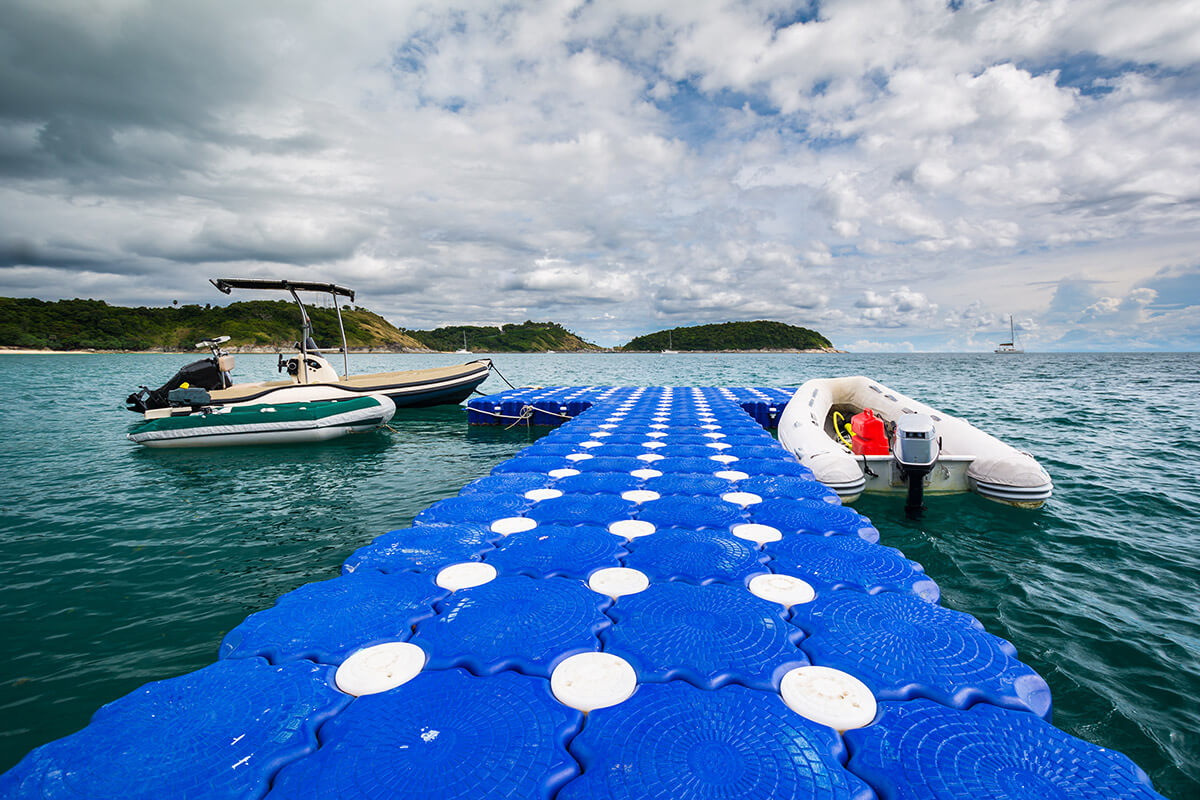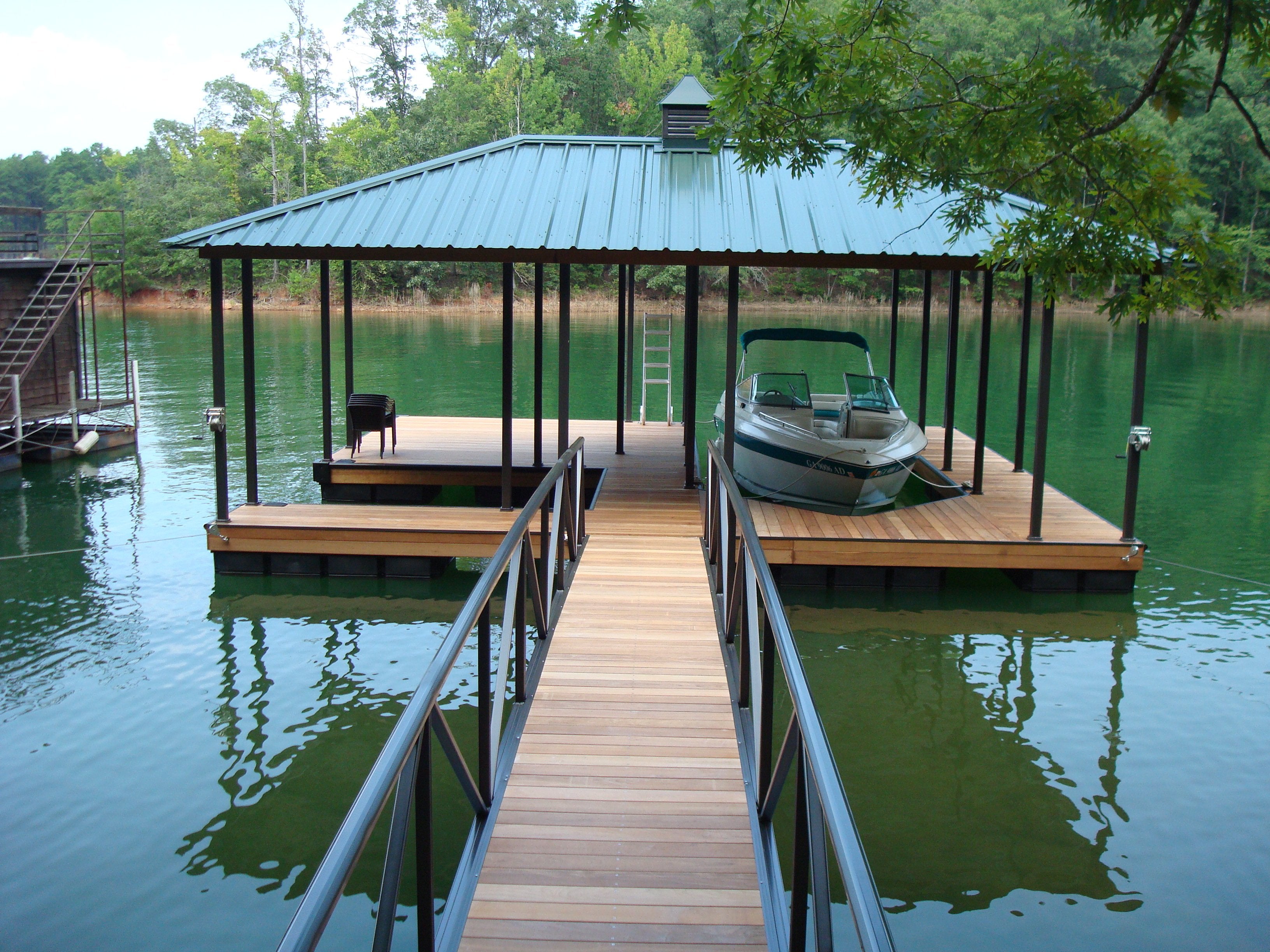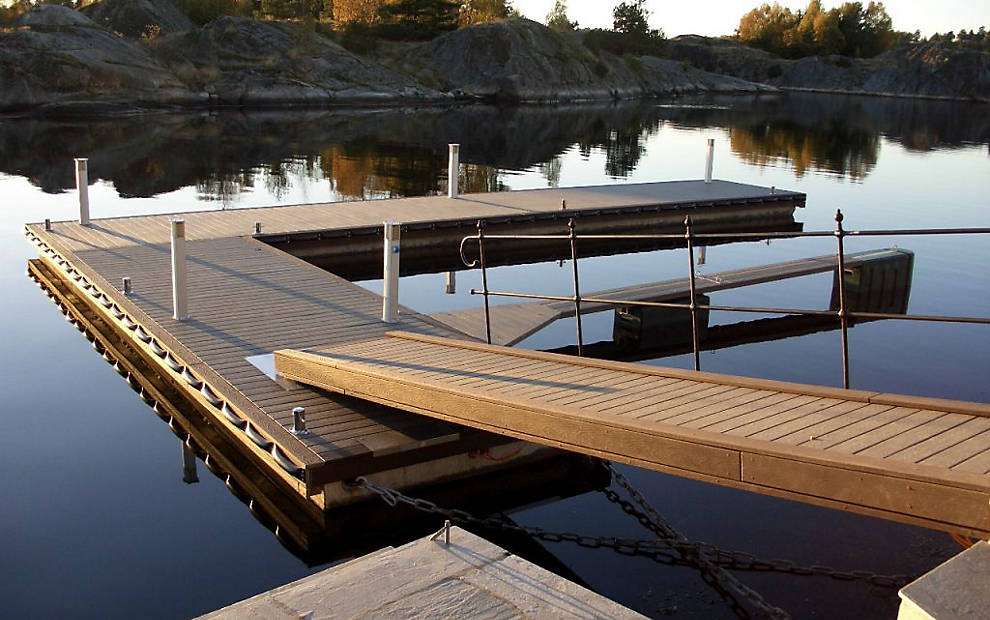Upgrade Your Beachfront With Long Lasting Floating Docks
Upgrading your waterfront with resilient floating docks can substantially improve both performance and aesthetics, providing a versatile option for various water tasks. These structures are developed to adapt to ever-changing water levels, making certain security and accessibility throughout the periods. With a series of products available, consisting of low-maintenance options and standard wood, choosing the right dock can match your individual style and fulfill useful demands. Nonetheless, understanding the nuances of installment and maintenance is essential for making sure longevity and performance. What elements should you consider when making this financial investment?
Advantages of Floating Docks
Floating docks offer a multitude of benefits that improve their allure for different maritime applications. Unlike conventional fixed docks, floating docks increase and loss with the tide, ensuring regular ease of access for watercrafts and watercraft no matter of ecological problems.
Additionally, floating docks are easier to install and move, offering adaptability for seasonal or momentary use. Their modular design enables customization to fit details requirements, whether for personal marinas, domestic beachfronts, or industrial applications.
Additionally, floating docks create very little disruption to the marine atmosphere, preserving regional ecological communities and decreasing the probability of disintegration. They additionally offer improved safety and security and security for users, as their buoyant nature uses an extra flexible surface area than inflexible structures.
Additionally, floating docks can facilitate a diverse variety of tasks, such as angling, swimming, and entertainment boating, making them a valuable asset for waterfront development. Their flexibility and functionality make floating docks a preferred choice for a range of marine jobs.
Selecting the Right Materials
Selecting suitable materials for floating docks is important to their durability, performance, and overall effectiveness. When choosing materials, take into consideration factors such as ecological exposure, maintenance demands, and structural integrity. Usual products consist of wood, plastic, aluminum, and composite options, each offering distinct benefits and drawbacks.
Wood, while visually pleasing, requires normal upkeep to stop rot and decay. Pressure-treated wood can boost longevity, but it might still surrender to water damage gradually. Plastic floats, typically made from high-density polyethylene, are resistant to deterioration and call for minimal maintenance, making them an appealing option for low-maintenance applications.
Aluminum is another sensible choice, known for its toughness and light-weight buildings. It is immune to rust and can endure harsh climate condition, although it might be a lot more expensive than various other materials. Compound materials incorporate the most effective characteristics of timber and plastic, offering a resilient and low-maintenance alternative that resembles the appearance of timber without the associated disadvantages.
Ultimately, the option of product ought to straighten with the meant usage, environmental factors to consider, and budget restrictions, guaranteeing a long lasting and functional floating dock that satisfies your particular requirements.
Installment Process Summary
The effective installment of a floating dock counts on cautious planning and implementation, guaranteeing that it runs effectively in its designated atmosphere. The very first action involves examining site problems, consisting of water depth, shoreline functions, and dominating climate patterns, which will certainly inform the dock style and anchoring system.
Complying with the website analysis, the next phase is to prepare the floating dock elements. This includes setting up the structure, securing floats, and attaching any kind of needed hardware. It is critical to ensure that all connections are robust and water-resistant to endure marine problems.
Once the dock is put together, the setup process begins with positioning the dock in the water. This can involve a crane or other training tools, particularly for bigger structures. Appropriate positioning is vital for performance and security.

Upkeep Tips for Longevity
Routine maintenance browse this site is necessary for ensuring the long life and optimal efficiency of a drifting dock. To accomplish this, begin with regular evaluations at the very least twice a year, concentrating on the honesty of the dock's structure, consisting of the flotation protection gadgets and connecting hardware. Try to find signs of damage, deterioration, or wear, and attend to any kind of issues immediately to avoid further damage.
Cleaning is an additional critical element of upkeep. Get rid of debris, algae, and barnacles from the dock's surface to avoid unsafe problems and maintain aesthetic appeal. Utilize a light cleaning agent and a soft brush to stay clear of harming the dock's products.
Furthermore, guarantee that the dock is properly anchored and secured to endure seasonal modifications in water degrees and climate problems. Examine the anchoring system for security and make changes as needed.
Enhancing Your Exterior Aesthetic
To create an aesthetically enticing outdoor area, integrating a floating dock can considerably boost the general visual of your waterfront property. Floating docks are not just useful however can additionally serve as a striking focal factor that enhances the natural surroundings - floating docks. Offered in different products and styles, these docks can be tailored to match your home's building design and landscape
The addition of attractive components, such as integrated illumination or fashionable railings, further raises the dock's aesthetic charm. Think about utilizing natural wood surfaces, which blend flawlessly browse around these guys with the setting, or going with modern-day materials like aluminum or composite decking that provide a sleek, contemporary look.
Tactically putting planters or seating areas on or around the dock can develop welcoming areas that urge relaxation and enjoyment of waterside sights. In addition, incorporating colors and appearances that balance with your landscape will develop a cohesive visual throughout your outdoor location.

Verdict

Upgrading your waterside with long lasting floating docks can substantially enhance both performance and appearances, giving a functional service for different water tasks. Unlike traditional fixed docks, floating website link docks increase and fall with the trend, making sure regular access for watercrafts and watercraft no matter of environmental conditions.Selecting suitable materials for floating docks is important to their long life, efficiency, and total performance.Once the dock is assembled, the installation procedure starts with positioning the dock in the water.In recap, floating docks deal numerous benefits, including versatility to water degree modifications and a selection of product choices.